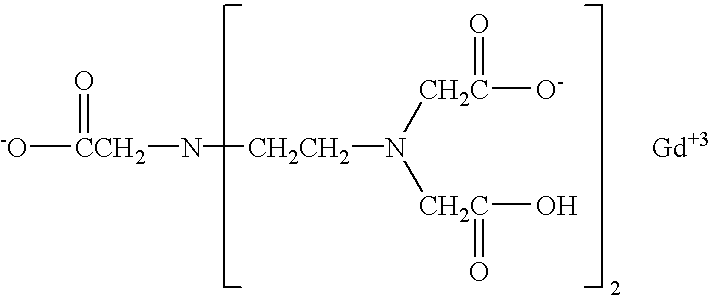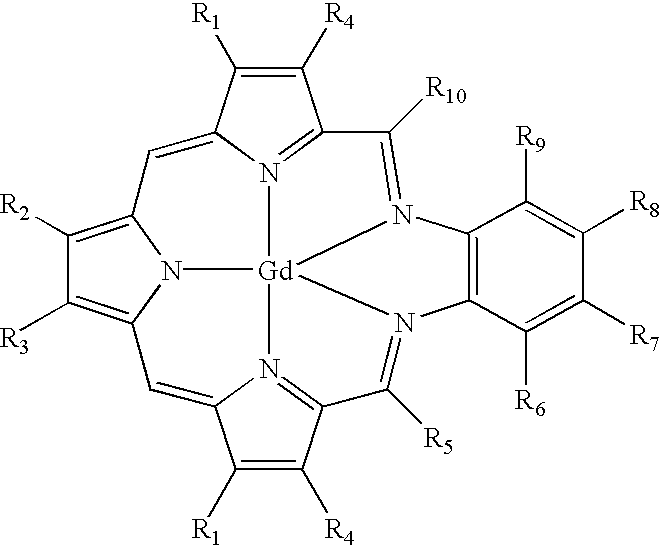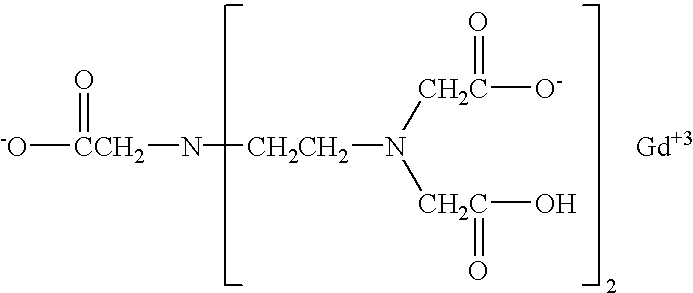Method of using gadolinium neutron capture to treat cancers
a gadolinium neutron and cancer technology, applied in the field of cancer treatment by using gadolinium neutron capture, can solve the problems of long-felt and unsatisfactory need for biologically well-tolerated, high tumor-specific uptake, and unrealized full potential of nct as a cancer treatment method
- Summary
- Abstract
- Description
- Claims
- Application Information
AI Technical Summary
Problems solved by technology
Method used
Image
Examples
Embodiment Construction
[0079] The following Examples are included solely to provide a more complete understanding of the invention disclosed and claimed herein. The Examples do not limit the scope of the invention in any fashion.
[0080] Materials and Methods:
[0081] Cell Culture and Gd-DTPA Uptake:
[0082] Primary cells were derived from tissue extracted from a patient undergoing surgery for resection of a right temporal lobe tumor. The tumor was classified as glioblastoma multiforme according to the WHO criteria..sup.(17) The tissue was finely triturated and treated with a physiological trypsin solution (0.25% Trypsin, 1 mM EDTA) for 20 mm. at 36.degree. C. to obtain a suspension of dissociated cells. The harvested cells were propagated in Dulbecco's modified Eagle's Medium (DMEM) supplemented with 10% FBS, at 36.5.degree. C., 5% CO.sub.2, and humidified atmosphere. Cells were always re-plated in the same media once they reached confluence.
[0083] The established cell line (designated "TB 10") was immunohisto...
PUM
| Property | Measurement | Unit |
|---|---|---|
| concentration | aaaaa | aaaaa |
| concentration | aaaaa | aaaaa |
| energy | aaaaa | aaaaa |
Abstract
Description
Claims
Application Information
 Login to View More
Login to View More - R&D
- Intellectual Property
- Life Sciences
- Materials
- Tech Scout
- Unparalleled Data Quality
- Higher Quality Content
- 60% Fewer Hallucinations
Browse by: Latest US Patents, China's latest patents, Technical Efficacy Thesaurus, Application Domain, Technology Topic, Popular Technical Reports.
© 2025 PatSnap. All rights reserved.Legal|Privacy policy|Modern Slavery Act Transparency Statement|Sitemap|About US| Contact US: help@patsnap.com



